Pedalling ahead: an e-bike buyers guide
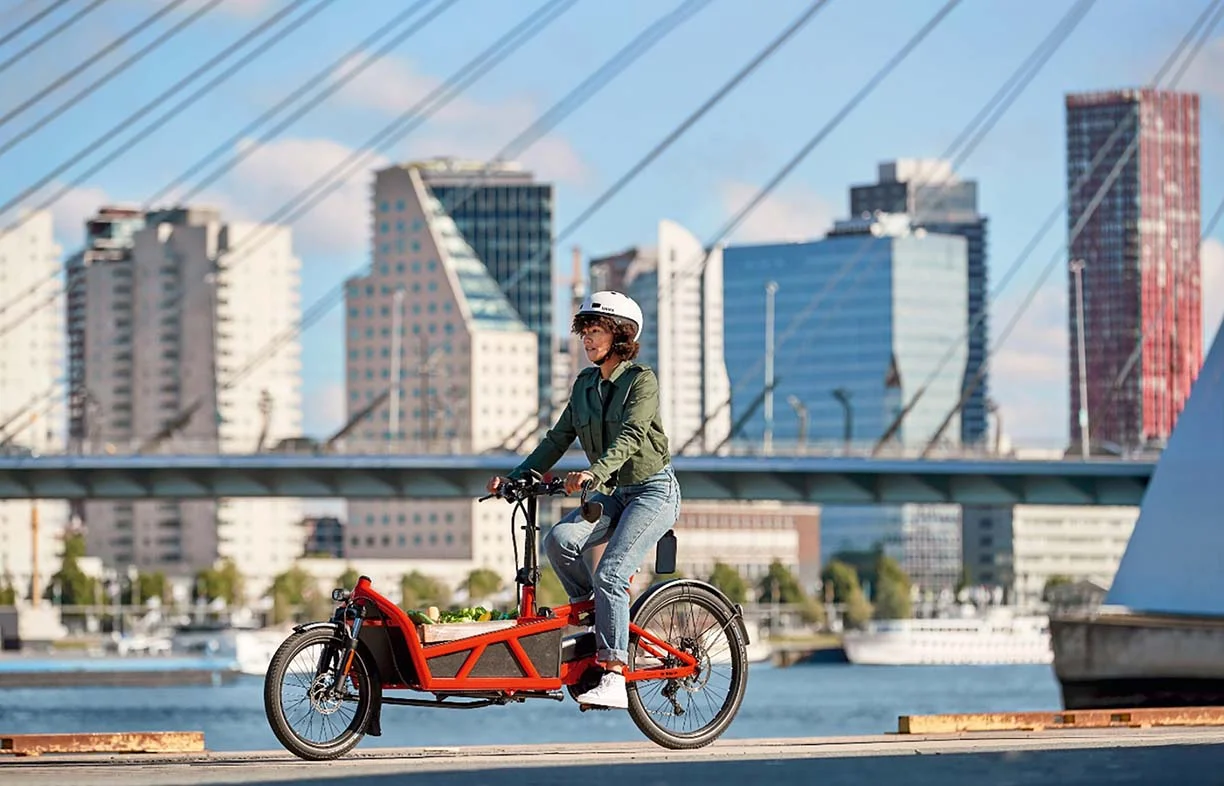
An e-bike is much more than an upgraded bicycle. With extra carrying capacity and riding range, they’re a viable alternative to a car for many purposes. But there’s a bit more to consider than a conventional bike purchase: Simon Vincett explains the types available and what to look for.
You simply can’t go near a bicycle these days without possibly finding an electric motor lurking.
The bikes of morning commuters, cargo bikes carting young ones to kinder, mountain bikes on the local bush trails and even the sleek steeds of weekend warriors belting past in a lycra flash are frequently electrically assisted. The fact is that e-bikes, as they are known, are now a mainstream alternative to the old unassisted treadly. A few athletes have even been caught with a tiny battery and motor concealed in their bike, to give them an unfair edge in the final sprint.
In the last three years the number of e-bikes imported into Australia has tripled. There are shops in every capital city devoted to them. For the Australian cycling industry as a whole, e-bikes are the fastest-growing segment.
Peter Bourke, general manager of Bicycle Industries Australia, says projections suggest further growth in the near future. “We won’t meet the Netherlands level where 50% of bikes sold are e-bikes, because we don’t have the same bike commuting culture. But I can see growth of e-bikes to a quarter of sales in bike shops.”
E-bikes are more than an upgraded bicycle. With their extra carrying capacity, speed and ability to extend your riding range, they present an alternative to a private motor vehicle for commuting and local transport. Riders can take off faster, ride further and use less effort. As we embark on a new decade, challenged as it is with traffic congestion and emissions, it’s time to get to the bottom of just what sort of alternative e-bikes offer.
Why get an e-bike?
The fundamental reasons for getting an e-bike are the same pleasures that the bicycle has always offered: freedom and fun. Pedalling your own bicycle means going your own way at your own pace and that’s a thrill whether you are nine or 90.
Moreover, with each ride you are honing your health with physical activity. And if your trips by e-bike are replacing car travel, each ride avoids greenhouse gas emissions. Burn fat, not oil!
But why an e-bike rather than a conventional bike?
Well, you have the motor to assist you of course. An e-bike gives you confidence to ride with friends because you know that you’ll be able to keep up and that you’ll be able to complete the distance. For riding in traffic, the motor gives extra muscle to take off smartly from the traffic lights. For the weary commuter, the battery boosts your depleted reserves and gets you home into a nasty headwind even when you’re running on empty. And shower facilities at work are less necessary, as you don’t have to work so hard.
You can deal with more weight with a motor to assist you, so you can run errands such as carting home groceries by bike. That’s why so many cargo bikes have motors these days. But you can also put panniers on most e-bikes that are designed for commuting—many come with a pack rack as standard.
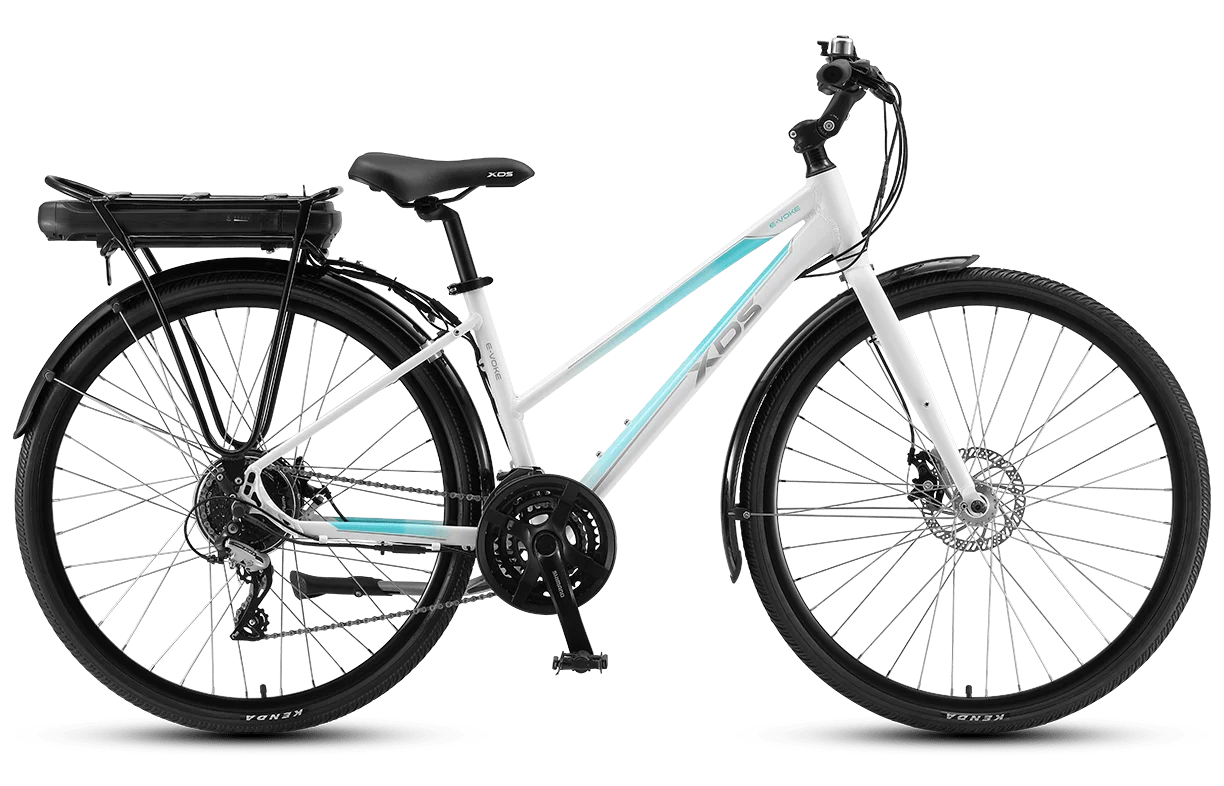
Two types: pedelec and throttle
An e-bike is a conventional bicycle with an electric motor added. You still pedal it and the motor is there to assist you with extra power. More precisely, an e-bike is a strengthened and modified bicycle built around a motor, battery and electrical system.
Electric bicycles often have fewer gears than their non-electric counterparts, commonly having only a single chainring near the pedals. Lower gears aren’t so necessary with a motor to help you up hills.
Most e-bikes today are pedelecs, where the motor cuts in when you start pedalling and cuts out when you stop. When you apply the brakes the motor also immediately cuts out. So a proportion of the power propelling the bike is always from your legs. The power that the motor provides varies from approximately 30% extra to 300% extra depending on the assistance level you select.
For instance, a Bosch e-bike system offers four levels of assistance: Eco, which provides 40% extra power to your pedalling; Tour, providing 100% extra; Sport, providing 170% extra; and Turbo, providing 250% extra. Other brands vary in the precise proportion of assistance provided, but have a similar stepped offering. If you just want a bit of help to keep up with slightly fitter riders, 100% assistance should be enough. On the other hand, if you need a lot of help to get a loaded bike up a steep hill then 300% would be good.
In Australia, pedelecs are allowed a power output of 250 watts (see box for a bit more on this) up to a speed of 25 km/h, above which you ride unassisted. When this standard was adopted from Europe in 2012, European bikes promptly came straight into Australia as the premium e-bikes. Since then, most of the big bike brands have brought out their own pedelec models.
The other type of e-bike has a throttle, usually operated by a thumb lever or a twist grip. The advantage of a throttle e-bike is that you don’t have to pedal to ride, so if your knee blows up mid-ride, for instance, you can get home without pedalling. Of course, you use up the battery faster if you ask the motor to do all the work.
Throttle e-bikes also have slightly different riding characteristics—they often have more immediate acceleration, for instance—so you should test ride some throttle e-bikes as part of your purchasing decision. If turning right or merging lanes in traffic, be aware that you’ll temporarily lose power when you take your right hand off the throttle to indicate.
Many throttle e-bikes are limited to 200 watts and not speed limited, under an earlier Australian standard. Despite their slightly lower power on paper, in practice they have much the same top speed and basically the same amount of torque to help you up hills.
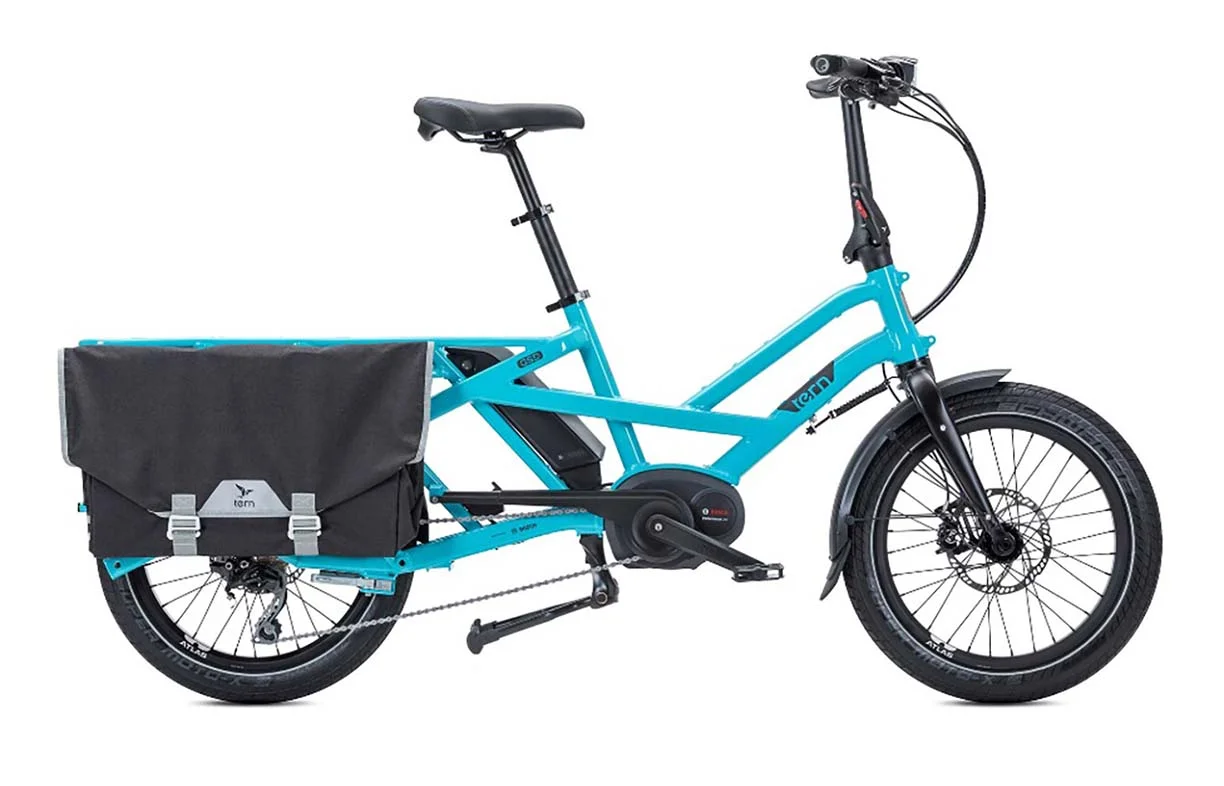
Which motor?
There are two types of motor on e-bikes: the mid-drive and the hub motor. Both have their advantages and disadvantages.
Mid-drive motor
The mid-drive is the motor most often found on pedelec bikes. It is generally more expensive than a hub-drive, but usually more sophisticated in presentation and in usability. It has an on-board computer called the controller that uses sensors to manage the operation of the motor. The sensors are at the cranks to start or stop with your pedalling, at the brakes to cut the motor when you brake, and often inside the motor (a torque sensor) to measure how hard you are pushing on the pedals. This latter sensor also cuts the power assist once the bicycle reaches a maximum assisted speed, which is 25 km/h for Australia; (with 10% tolerance, so this may go up to 27 km/h or so).
The torque sensor is the difference between an e-bike handling like a regular bike or not. When you push hard on the pedals, the system understands that you want a lot of power and provides maximum power quickly. Conversely, if you pedal gently the motor understands that you are cruising and applies minimal power according to the level of assistance you’ve selected.
For regular bike riders this is how a conventional bike operates and the torque sensor delivers a ride they can understand. However, if you want full power without pushing hard, you might prefer not to have a torque sensor in the system you buy.
Because they take advantage of the bicycle’s gears, mid-drive motors can often deliver more torque at low speeds. This feature is especially important for loaded cargo bikes going uphill—European manufacturers of these vehicles have moved away from hub to mid-drive motors.
Hub motor
A hub motor replaces the hub of one of the wheels. It can be set up as a pedelec system, including a torque sensor, but it is usually more basic, such as without a torque sensor or with a throttle. If you’re looking for a cheaper electric bike, it will usually have a hub motor. A hub motor has the advantage that it acts directly on the wheel and, because it doesn’t use the chain and gears, it causes no wear to these components.
A hub motor puts more weight at one end of the bike, which makes very little appreciable difference to how it rides (except for an e-mountain bike where it’s helpful to have the weight centralised with a mid-drive motor). The weight in the hub really only matters when you are off the bike and manoeuvring it around, when extra weight in the front hub becomes a bit cumbersome.
Above the assisted speed limit, either type of motor won’t assist you; instead it will provide a slight resistance to your pedalling. If you’ll often be riding above this speed on flat terrain, a motor with low resistance is preferable.
Test riding is the best way to decide whether you might prefer the performance of a mid-drive or hub motor, but the final decision will depend more on the comfort, suitability and price of the e-bike as a total package than its specific motor.
E-bike power
Although an e-bike’s motor is limited to a nominal power of 200 W or 250 W, motors are actually rated for continuous power delivery tested over an hour. For short durations, an e-bike’s power assist is often greater than the nominal power, useful for hills or initial acceleration. Requirements are specified in AS 15194:2016.
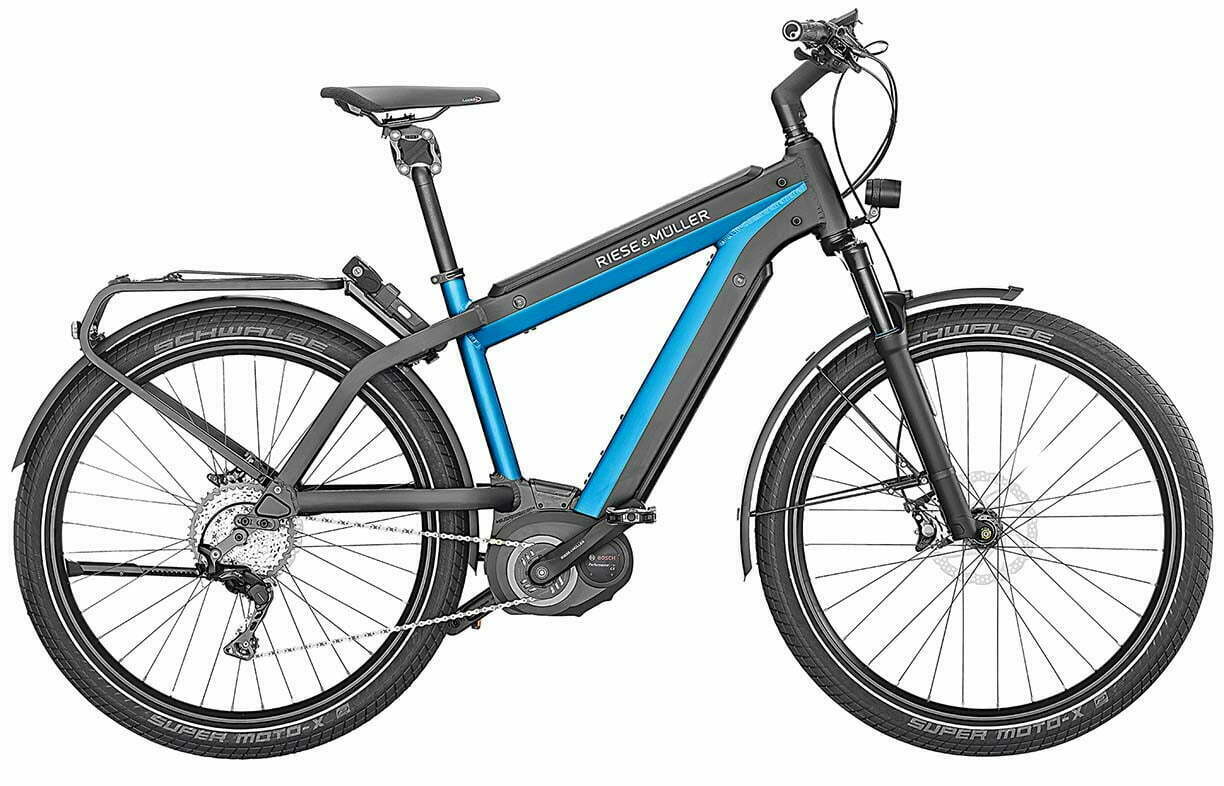
E-bike systems
When it comes to buying an e-bike, you’re actually choosing an e-bike system, rather than just the motor. The e-bike system consists of the motor, battery (an important subject covered below), controller and display.
The controller manages the output of the motor, which is simple if there’s just a throttle, and more complex with a pedelec system where it varies the motor’s power depending on the assistance level selected, and modulates the delivery of the power from rapid to gentle build-up according to the torque sensor, if fitted.
You will also come across different displays. Some are very basic—just some buttons and lights to select a power-assist level. Others are backlit, liquid crystal displays telling you such things as your speed and battery level, as well as your level of assistance selected.
There are different brands of e-bike systems, all of which do a better or worse job of different aspects. When you have narrowed down the selection of e-bikes you are considering you will need to weigh up advice about the system used by each.
An important part of this consideration is how much support there is for the brand that you buy. You want to know that parts are readily available and that warranty claims can be assessed without having to send a component overseas.
Some e-bikes use open systems, where the electrical components are relatively generic and it may be possible to repair or replace parts with alternative brands. Open systems are common on e-bikes cheaper than $2000. The disadvantage with these systems is that they have less-sophisticated controllers for battery charging and diagnostics.
Other e-bikes use a proprietary e-bike system with more intelligent systems to manage the battery, prolong its life and provide diagnostic reports to a servicing bicycle shop. These are common on higher end e-bikes. Some are used across multiple bike brands (e.g. Bosch) and some are specific to the one bike brand. One disadvantage is that only that brand’s components can be used in repairs, and you may only be able to get them serviced at specific dealers, which limits your choice of service location.
All about e-bike batteries
Whether the e-bike fits and suits your needs is your first consideration but the dealbreaker might be whether you’re comfortable with the battery. Almost all e-bikes now use lithium ion batteries, the same sort as are in mobile phones and laptops. These are straightforward to use and quite forgiving because of their inbuilt battery management systems.
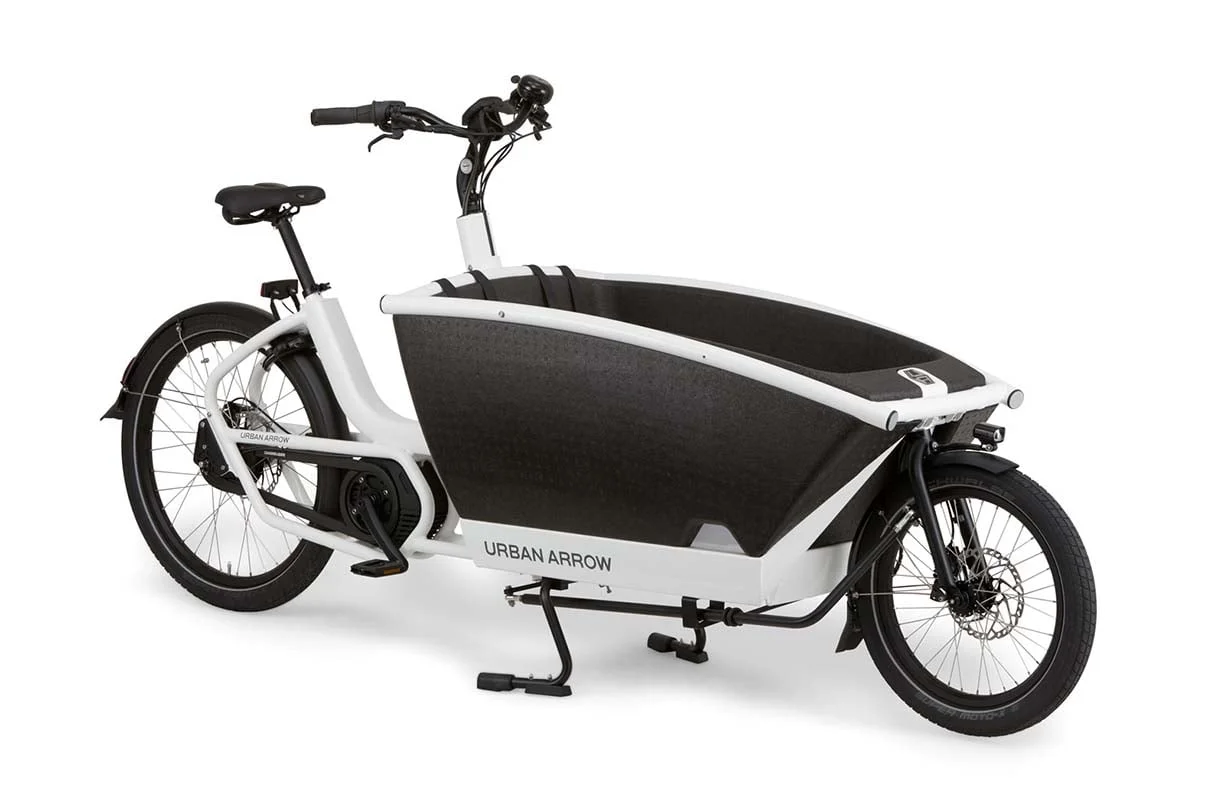
Charging
When you buy an e-bike, it comes with a charger for the battery that plugs into a standard 230 V wall socket. If you want to charge at your destination (e.g. at work) you can take the charger with you, or purchase an additional charger. An e-bike battery is likely to take three to six hours to completely charge from fully depleted, but for top ups an hour at a time is enough.
The battery is locked to the bike with a key and removable on most bicycles. The latter is important, for example, if you’re parking your bike downstairs, but your only wall socket for charging is upstairs. This feature could also be useful for hot-swapping batteries or to reduce the bike’s weight if the battery is flat. (On bikes using the Fazua mid-drive e-bike system, the motor as well as the battery can be easily removed to further reduce weight.)
How long will the battery last on a ride?
How long the battery will last on a ride depends on how hard the motor must work thanks to hills, headwinds and weight, and how much power you ask the motor to put in. With a new, fully charged battery you could expect to be able to ride between 65 km and 100 km depending on the size of the battery and the conditions on your ride.
Comparing e-bike battery sizes is confusing because some specify amp hours and voltage while some use the more readily understandable watt-hours. You can compare capacities by converting to watt-hours, easily done by multiplying the amp hours by the voltage. So a 10 amp hour 36 volt battery has 360 watt-hours capacity and a 12 amp hour 24 volt battery provides 288 watt-hours.
Bosch provides an online range assistant calculator to estimate how far you can ride on one charge of the battery (bosch-ebike.com/au/service/range-assistant). By dialling up or down your speed, effort and total weight carried, you find that a 400 watt-hour battery could last you 137 km or just 57 km.
To get the most from your battery with a mid-drive motor, use the e-bike’s gears to ease the workload for the motor, just as you change down a gear to make it easier for your legs. Also use the level of assistance you need, not the highest level of assistance all the time. The highest level of assistance is there for long or steep hills, for headwinds, for carting a heavy load and when you’re tired.
Throttle e-bikes will use up the battery faster. A pedelec system with a torque sensor draws just enough power to complement your pedalling—the controller unit is evaluating what’s required multiple times per second. A human applying throttle while pedalling is incapable of such subtlety and will use more power.
Electric cars use regenerative braking that charges the battery while braking. Most e-bikes don’t do this as, on a bicycle, braking energy is minor compared to air resistance.
Battery lifespan
One of the beauties of a traditional bicycle is its simplicity and longevity—there are many very old bikes still in service. An e-bike trades some of this longevity for improved power and range. Standard advice is to expect the battery to last around three years, or at least have reduced capacity after this time. Some users report longer lifespans; five years is common. We’ve even heard of an e-bike battery used by Australia Post and still in service (with reduced capacity) after nine years!
A battery will last longer if it’s not worked too hard. In general, you should try to keep your battery charge above 20%. They must not be left for a long time (many months) with a low charge. If you must leave the battery idle for a couple of months, leave it at about 50% to 80% charged.
An e-bike battery includes a battery management system: electronic components that manage the charging and discharging of the battery. It’s an essential to manage a lithium ion battery, but is another possible point of failure, especially on a bicycle subject to heavy vibration, bumps, scrapes and rain.
Finally, the lithium ion batteries commonly used in e-bikes don’t perform well at very cold (0 °C to 5 °C) or very hot temperatures (35 °C to 45 °C). At these extremes you can expect at least 15% less capacity than normal. Lithium iron phosphate batteries have a wider operating range, but these are not yet common in e-bikes, if available at all.
In fact, being in extreme temperatures is not good for the long-term health of the battery. If conditions are too nasty for humans, they’re also too nasty for e-bikes. Some systems will switch off to protect themselves if the temperature is too high, e.g. 50 °C. Most electric cars have an active cooling system to remove heat from the batteries. Such systems are too heavy and bulky for an e-bike, so they rely on natural airflow.
Read more about caring for e-bike batteries from the excellent people at Glow Worm Bicycles glowwormbicycles.com.au/pages/battery-safety-and-longevity.
Replacing an old battery
Right now a new battery costs between $700 and $1100 depending on the brand and system. It’s a sizeable outlay for a consumable item, so you need to budget replacement into the overall cost of the e-bike.
The bicycle industry moves quite fast, so it’s possible that by the time you want a replacement battery (or perhaps a subsequent one), it may be difficult to find one that’s suitable. The company making your original battery might have exited the industry.
This is less likely to be a problem for a battery of relatively standard size and shape, produced in high volume by a large company with a long track record. For example, new batteries are still available for the original Bosch e-bikes introduced a decade ago. Also, if such a company was to disappear, compatible replacement batteries might be produced by someone else. If your battery is specifically shaped to fit the frame and electrics of an exotic bicycle produced in small numbers, sourcing difficulties are more likely.
If your battery is part of an open e-bike system, you may have more options for third-party battery replacement. Many such batteries use simple positive and negative connectors and the bicycle shop may be able to replace it with a generic battery having the same voltage. It probably won’t perfectly match the original’s size and shape, so some creativity may be required. You’d also need a new charger to ensure full compatibility with the new battery. An e-bike battery usually contains lithium ion cells in the 18650 battery format, but it’s quite difficult to determine their specific chemistry.
Also consider the warranty as this may help with a battery replacement; see the section on warranties below for the typical warranties you get with an e-bike.
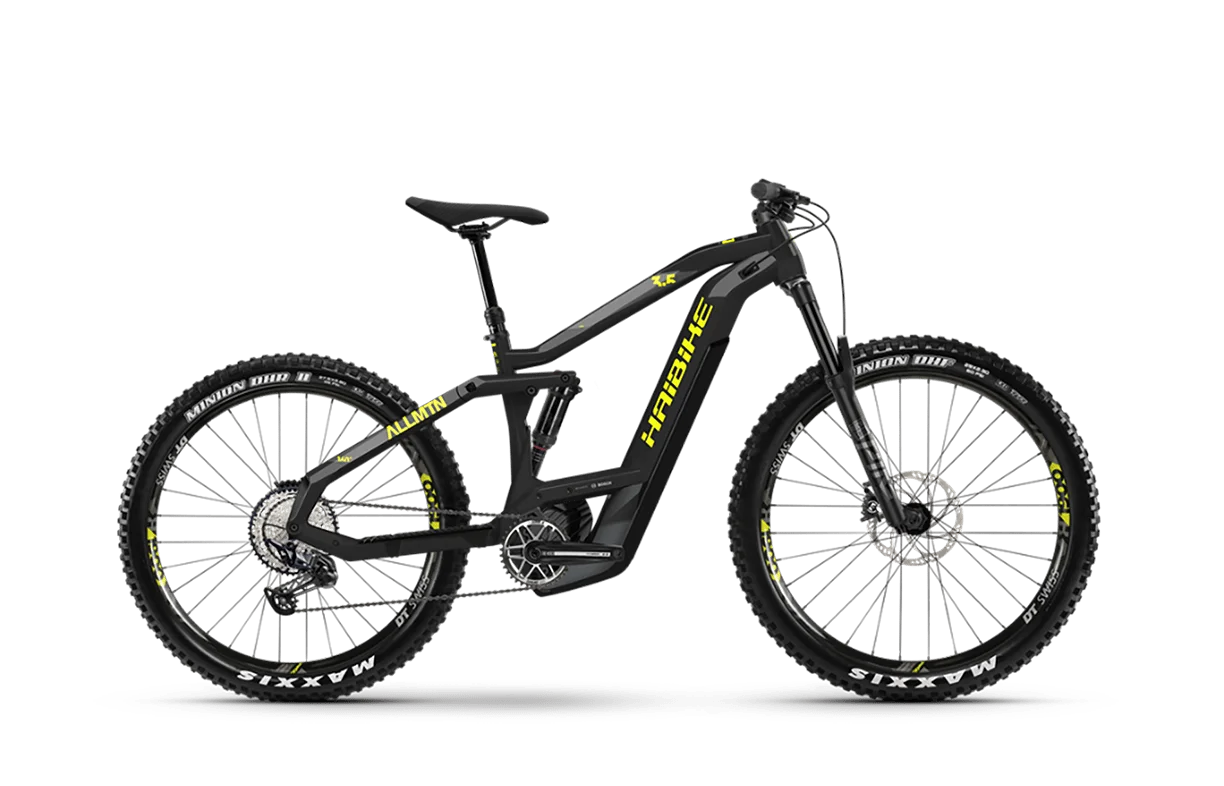
Battery recycling
Used lithium ion e-bike batteries can be recycled—check with your local council for e-waste drop-off points. For more details on battery recycling, see ‘Recycling Solar’ in Renew 149.
Where do I get an e-bike?
A specialist e-bike store is the most reliable source. Look for one that stocks a range of brands and isn’t beholden to a particular supplier. That way you’re getting access to the best models across a range of styles of e-bike. A conventional bike shop might stock e-bikes and might have a staff member who is actually experienced with them, but be aware that not all staff members will necessarily have specialist knowledge of e-bikes.
Ultimately the test ride is your best measure of whether the e-bike is right for you. All the best specs on paper mean nothing if you don’t feel comfortable riding it. Some shops will let you take the bike home and test ride it for a few days, which is great if you can arrange it. Be open-minded, visit multiple shops and test ride as many models and as wide a variety as you can.
Don’t forget to ask about the bike bits. The brakes must be good to deal with the extra weight and momentum that a motor system brings. If they aren’t hydraulic disc brakes, ask why. The frame must be strong enough to easily cope with the weight of the motor. The tyres should have the highest possible puncture resistance because weight is not an issue when you have a motor to help you. Consider putting sealant in the tube as well to seal punctures as soon as they happen.
Finally, the gears should be better than base level. You want to get good use out of this investment—you don’t want it to wear out within a year. Also, with extra power from a mid-motor’s assistance the gears will be changing under more torque and, therefore, will need to be a higher quality to deal with this rigorous life. Look for Shimano or SRAM brands and check that the gear model has a name rather than just a number. Named gear sets are higher quality than the numbered lower-range components.
We’d recommend that you don’t buy an e-bike off the internet. You need to test ride it to know whether it suits you and you need recourse to the retailer if you have a problem with the bike. If it ships from overseas it is very likely not to meet Australian standards and won’t be legal to ride. A lot of shops won’t service a bike that is bought off the internet—and they tend to know which bikes these are.
Warranties
Be sure to ask for the details of the warranties offered for the e-bike you’re considering. Warranties show that the manufacturer has confidence in their product and that the shop has confidence in their range and service. Expect five years for bike frame and two years for motor, battery and electric system components. Ask what things are excluded. Expect shorter and more restricted warranties for e-bikes designed for off-road riding. Be aware that opening the battery case, such as to replace the cells, will void your battery warranty—and can be dangerous as the battery management system is designed for the cells provided. Similarly, hacking or ‘dongling’ the motor to increase its power will void your motor warranty.
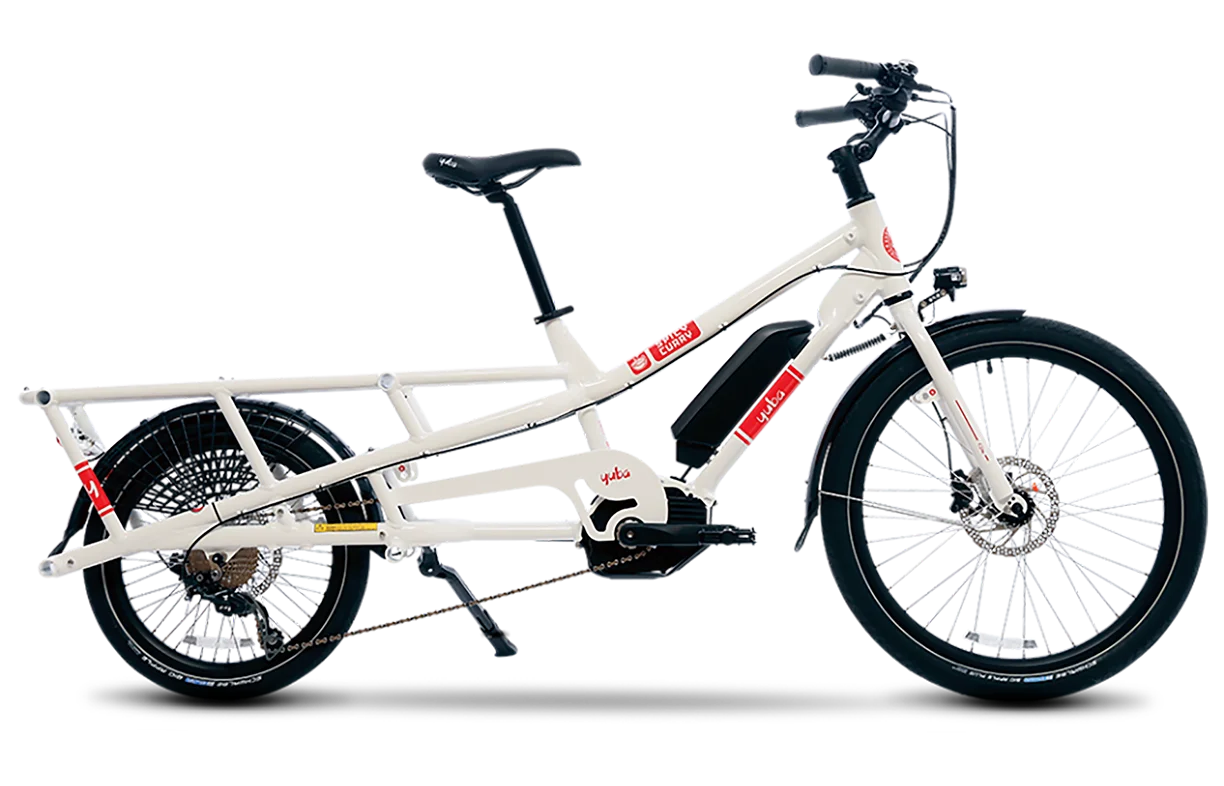
Can I convert my old bike?
Kits exist to convert your bike to an e-bike but they are becoming less common.
Good ones are expensive (up to $1500) and then you have to fit them yourself or pay someone to do it for you. The brakes on your bike are probably not adequate for the extra power the motor delivers and the strength of your bike’s frame is probably not adequate for the weight of the motor and battery. Then the new weight and power will change how the bike handles—it won’t be the bike it was before. For these same reasons, think carefully about buying an e-bike that has been converted with a kit.
Should I buy a secondhand e-bike?
It’s possible that a secondhand e-bike could be good value but it is more unlikely than likely. There will be no warranty available on any aspects of the bike unless the seller can show you evidence that the warranties can be transferred. The battery is probably needing to be replaced, which has significant cost and may be difficult to source. Future replacement of the battery may become impossible. Other parts for older e-bikes also may not be available anymore.
You should request to see the proof of original purchase to establish that the e-bike has not been stolen. You will also have to try to figure out if it has been in an accident. It may have a tricky electrical problem, which is why it’s for sale. It may also have been hacked to create a higher power output and is not legal to ride. Also, some shops will not work on an e-bike of unknown origin.
Electric Bikes Brisbane has a good list of things to check if you’re tempted to buy a secondhand e-bike (bit.ly/3aVkbYK).
Salary sacrifice and lease an e-bike
Just as you can sacrifice salary to lease a ‘company car’, you can lease an e-bike. That is if you can convince your employer to engage with E-stralian, the only company in Australia providing novated leases for e-bikes. Just like a ‘company car’ these lease arrangements are on the basis that the e-bike provides your transport to work. You can use the bike in your own time as well. The excellent lease cost calculator on the E-stralian website lets you quickly compare costs of models and proportions of usage. It also tells you how much money you would save if you switch to riding from driving.
E-stralian has a wide range of e-bikes of all sorts, though all at the premium end of the market, and regular servicing is included. You can choose the length of your lease and therefore how much you pay per month. You can also choose to pay off the bike to own it outright. E-stralian recommends a one- or two-week trial rental before leasing.
Security
E-bikes are desirable and relatively easy targets, so you need to be vigilant about security. Some e-bikes come with their own lock, which is useful, but they often just lock one wheel and don’t tether the bike to anything. You need a good lock for securing it at your destination, and this must be big enough because e-bikes are often chunky. Ideally you would test out the lock before buying it to see that it fits around the wheels and/or frame sections.
Most bikes are stolen from homes, however, so you should also lock it up there. An e-bike needs to be kept out of the weather or it will deteriorate quickly. It can cope with rain showers while riding but it will become rusty if left out in the rain regularly. So it should ideally be kept inside overnight, out of sight and also locked up. And you should make sure it’s covered by your insurance, both at home and away. Many home insurance policies by default only cover bikes at home and only up to a certain dollar value, which may be a lot less than the cost of your e-bike. Talk to your insurer about the coverage you need; if they can’t supply it, look elsewhere.
What else do I need?
You must wear a helmet when you ride a bike in Australia, so you’ll need one of those. You should also have a front light (white) and rear light (red) plus reflectors for when the daylight fades. Many e-bikes include lights powered from the main battery, which is a great feature. At home you should have a pump to keep your tyres at the right pressure. When you ride, you should carry a spare tube, a portable pump and a few tools to change a flat tyre.
If you’re new to riding, Bicycle Street Smarts (bit.ly/2vai1Fq) is a great information resource. Bicycle Network is another good resource. Membership with them also provides some ‘riding insurance’ in case you’re injured or you injure someone else or damage their property.
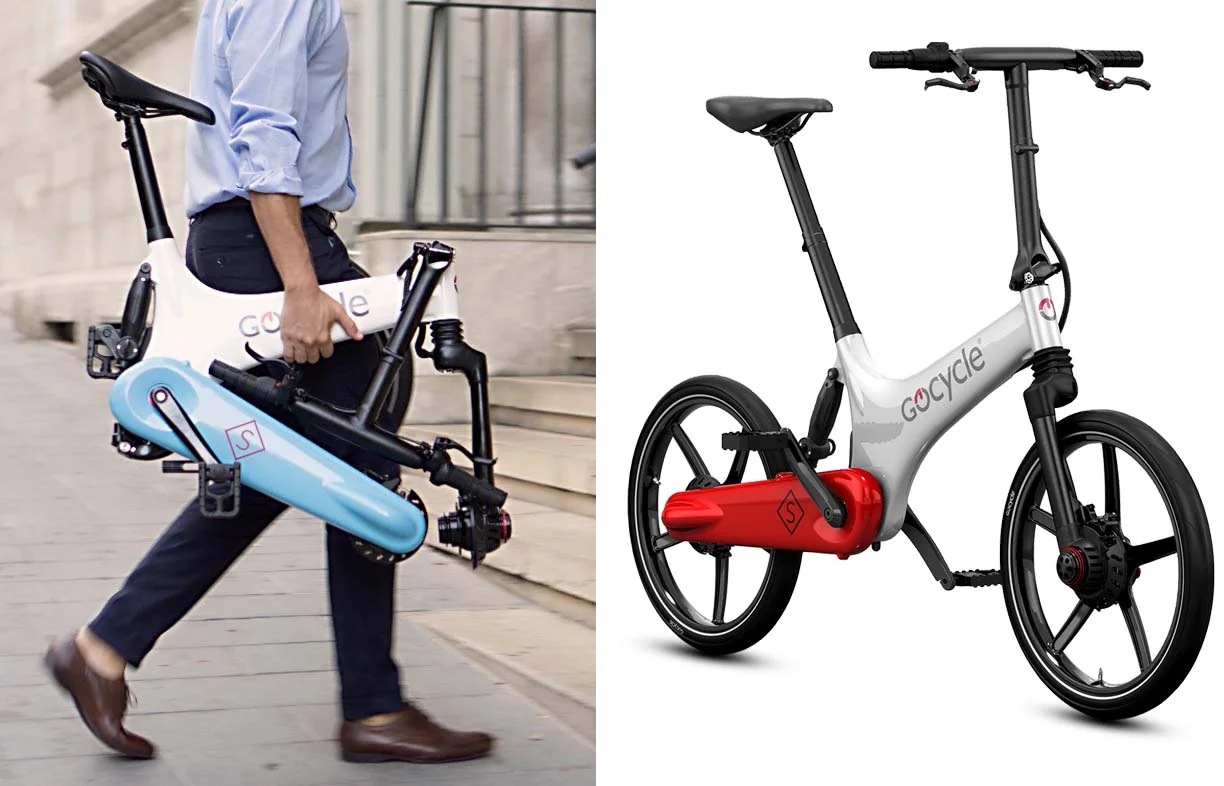
E-bike FAQs
Is it heavy?
Yes, e-bikes are heavier than conventional bikes. The motor and battery add an average of 5 kg of weight. They are also bulkier, having a heavier frame and often more features than an ordinary bike. However, many e-bike systems come with a walk throttle that propels the bike at walking pace to help you push it along.
Do I have to pedal?
With a pedelec type e-bike you must pedal for the motor to work—it assists you with additional power. There are also, however, e-bikes that have a manual throttle and can provide power even when you’re not pedalling. These are limited to a lower power by Australian regulations.
Will the battery run out?
This is a common fear, and yes, it can happen. But the system tells you how much charge you have left, and often in fact it tells you how far you can still ride. You can still ride an e-bike when it has a flat battery—it just becomes a heavy bicycle.
Will I get a puncture?
Yes, eventually everyone suffers from a puncture. Most e-bikes come with tough tyres to prevent punctures and it’s very worthwhile to put sealant in your tubes to fix punctures when they happen. Ask your favourite bike shop for help with this.
How do I take the wheel off?
When an e-bike has a hub motor, it is a more involved process to take the wheel off but it’s never impossible. Practise at home to master it, repair punctured tubes without taking the wheel off (check www.sheldonbrown.com/remove-tube.html for the method) or get a bike shop to do it.
What is a brushless motor?
Almost all e-bike motors are brushless these days, but you will sometimes hear ‘brushless’ touted as a selling point. The brushes in brush electric motors wear out and that’s why they have been phased out.
Why are e-bikes so expensive?
Expect to pay between $2000 and $10,000 for an e-bike. Bear in mind that the motor and battery systems add approximately $1500 to the price. Most e-bikes come with more expensive hydraulic disc brakes to provide enough stopping power for a heavy bike with motor-assisted momentum. Finally, e-bikes often come with lights and other features, which adds to the price.
Do I need to have it serviced?
An e-bike needs an annual service like any bicycle. That will provide adequate monitoring of the bike bits such as brake pads, chain, cables and bearings. The motor and battery probably need very little attention, but an annual overall service provides peace of mind—and may also show the current health of your battery; ask at your bike store about this.
Do I have to ride on the road?
There are many off-road paths and trails you can ride on, including good options for commuting, if you know where to look. But unless you drive your bike to them, most people will need to do at least some riding on road to get to the trail. Most states and territories in Australia allow adults to ride on the footpath but New South Wales, Victoria and Western Australia generally do not.
Do I need a licence?
You do not need a licence to ride an e-bike in Australia. However, e-bikes must be limited to a maximum power output: 200 watts, or 250 watts for e-bikes with a 25 km/h power-assisted speed limit. E-bikes with more power than these limits are illegal to ride on public roads and shared paths.
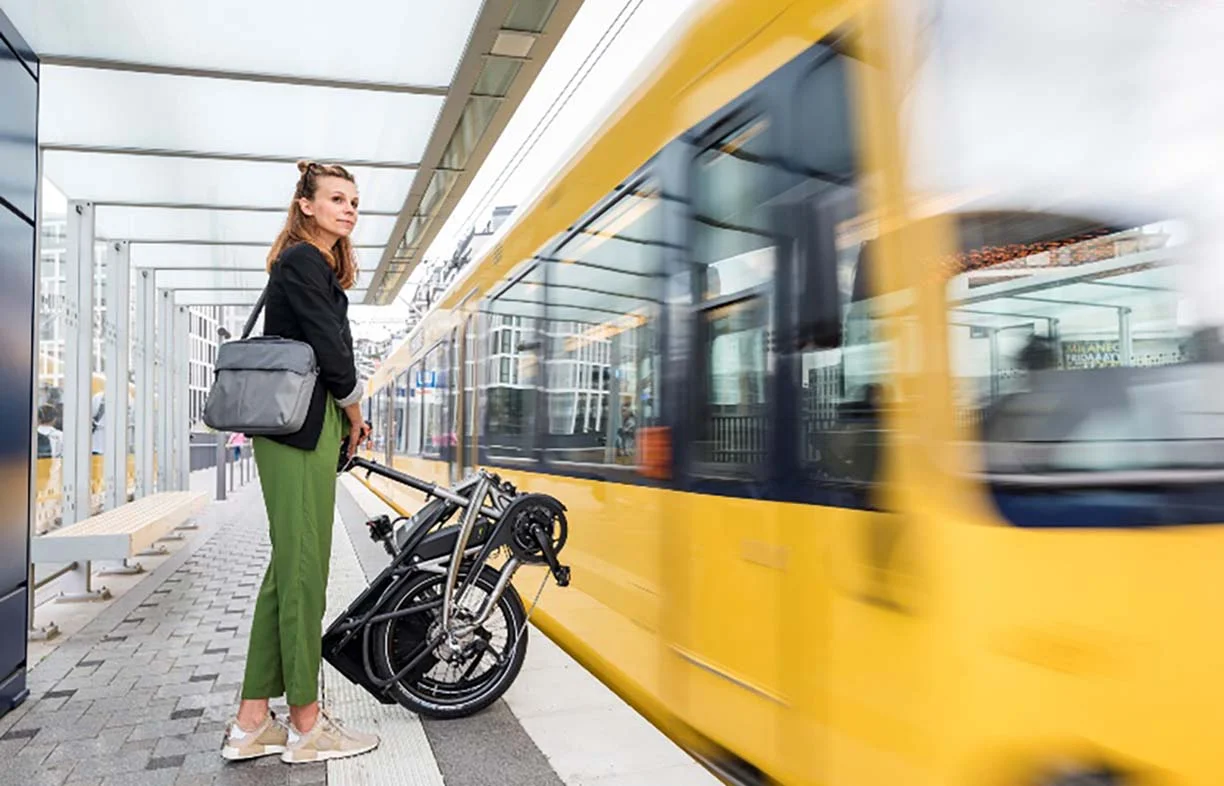
Thank you to Renew’s Andrew Reddaway and bike shops Spokes (Vic), Glow Worm Cycles (NSW), Dyson Bikes (Vic) and Electric Bike Superstore (Vic, SA) for their input to this guide.
further reading
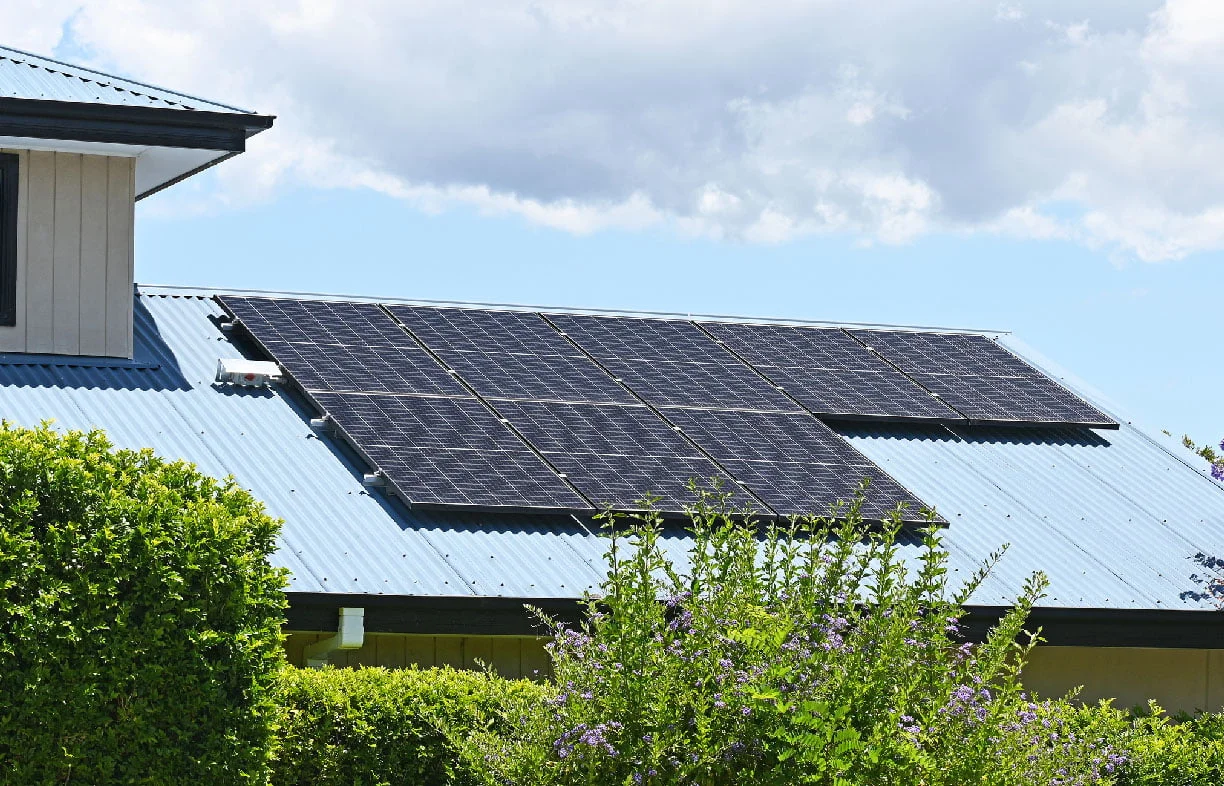 All-electric
All-electric
Direct PV solar hot water buyers guide
Solar hot water can dramatically reduce your water heating costs, but what if your house isn’t suitable for a conventional solar water heater? There is an alternative that can be used almost anywhere you have solar access, as Lance Turner explains.
Read more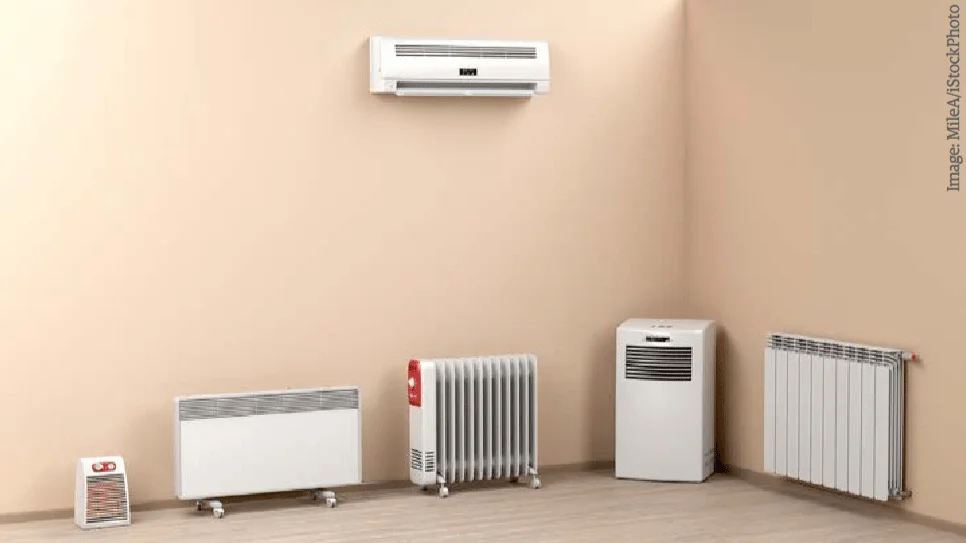 All-electric
All-electric
Staying warm this winter: A buyers guide to heating
As autumn declines into another long winter, it seems an opportune time to revisit one of our most popular buyers guides: our essential guide to heating yourself and your home.
Read more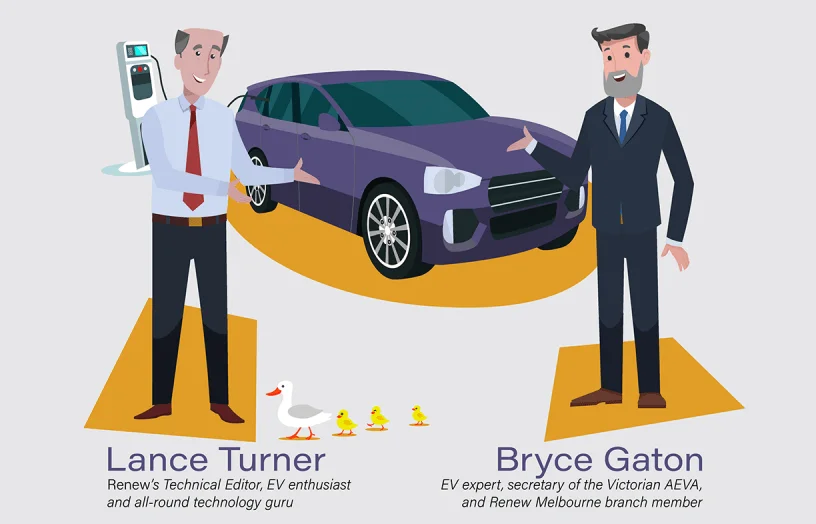 Buyers guides
Buyers guides
Electric vehicles for newbies
In this Renew special feature find everything you want to know about electric vehicles: how they work, why they’re superior to internal combustion engine-driven cars—and, yes, whether you can tow with them.
Read more

